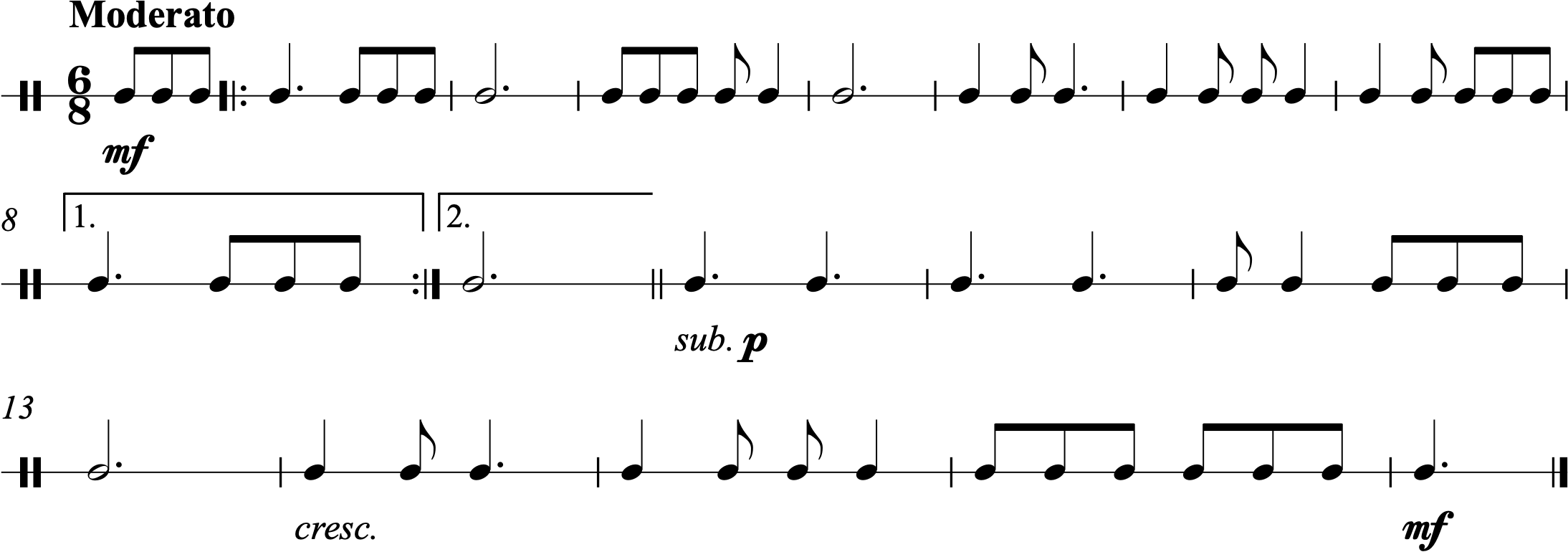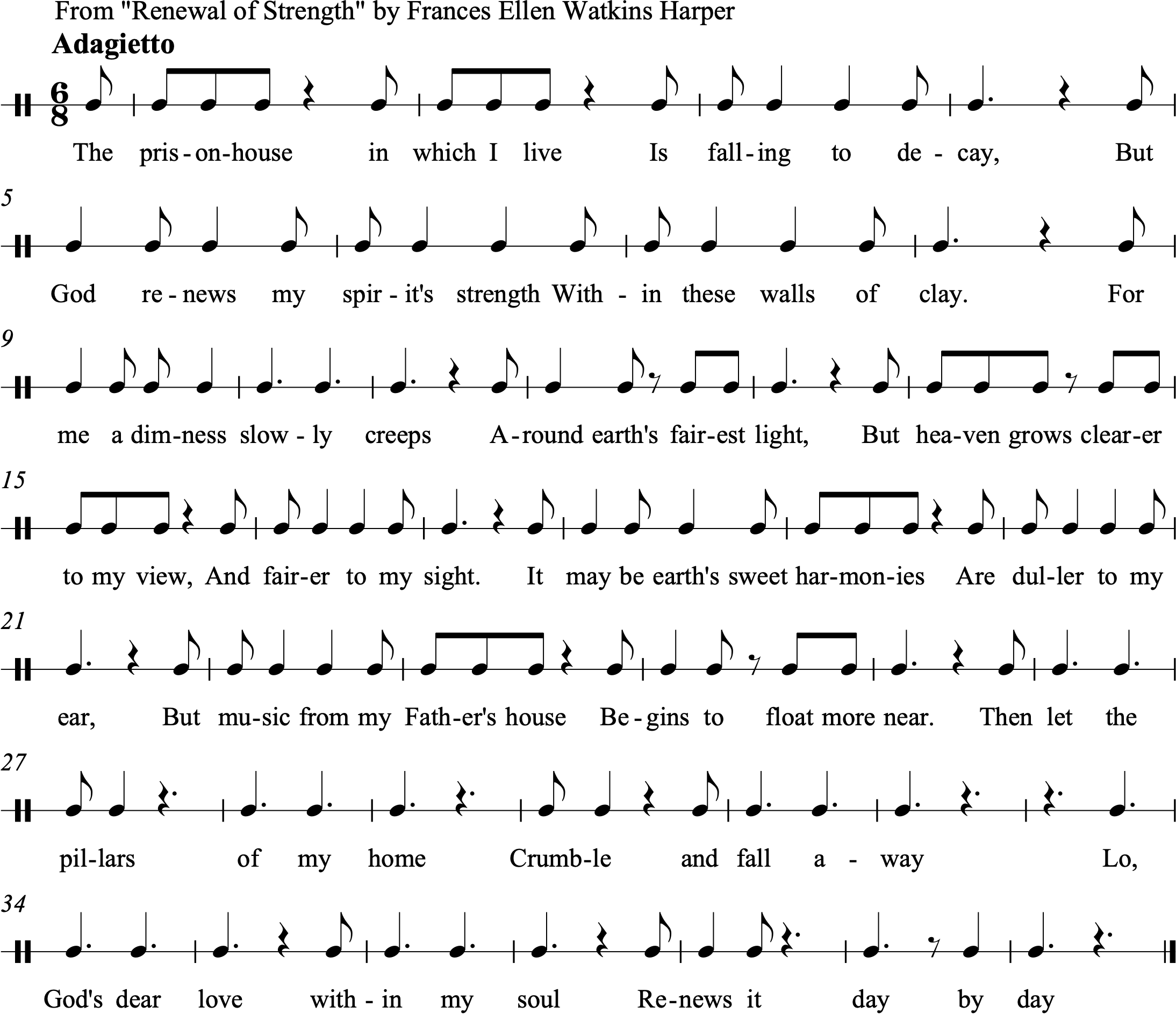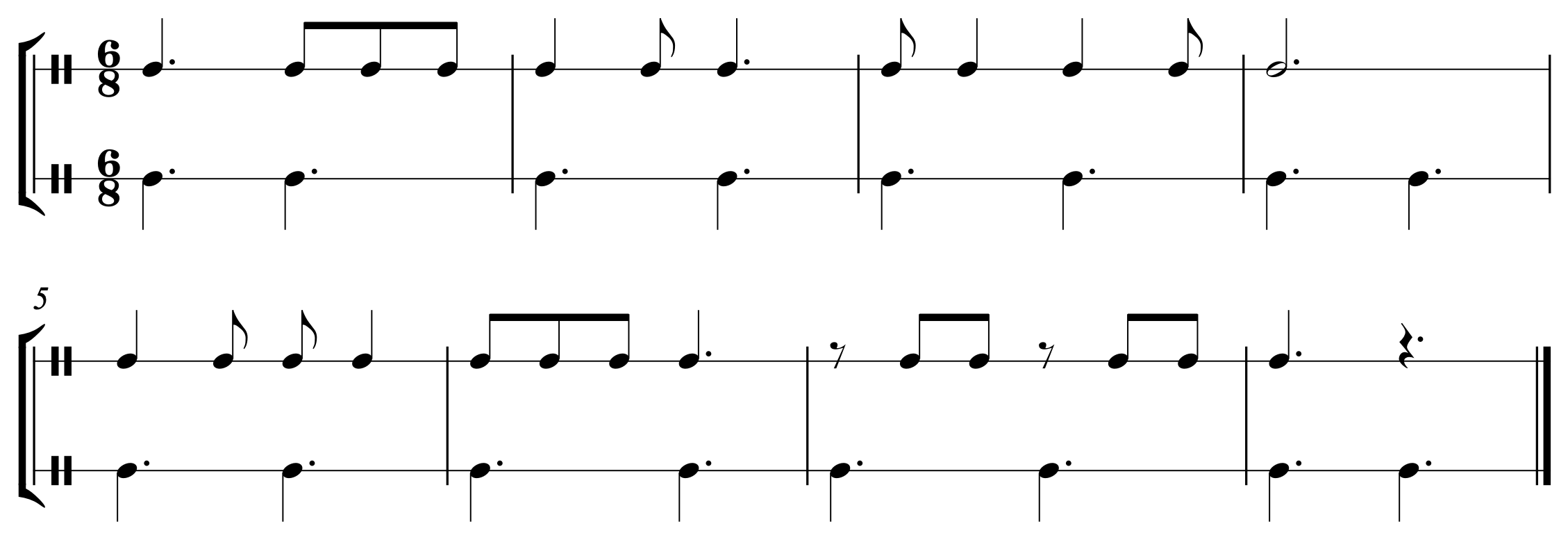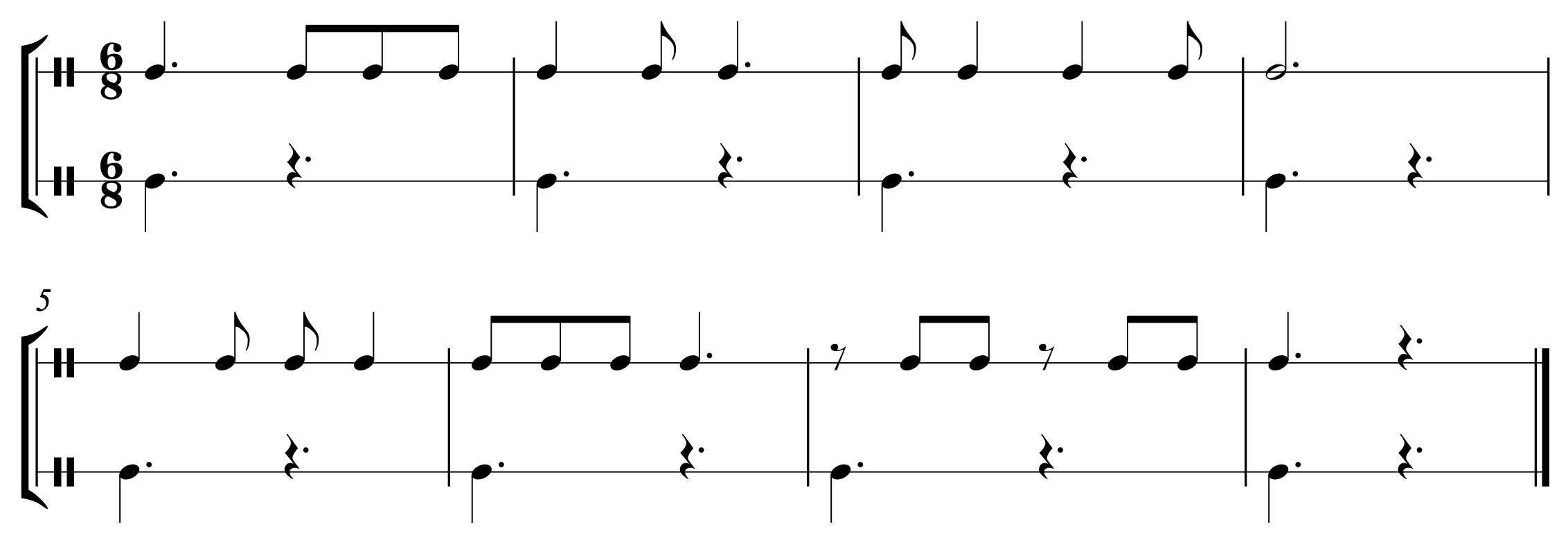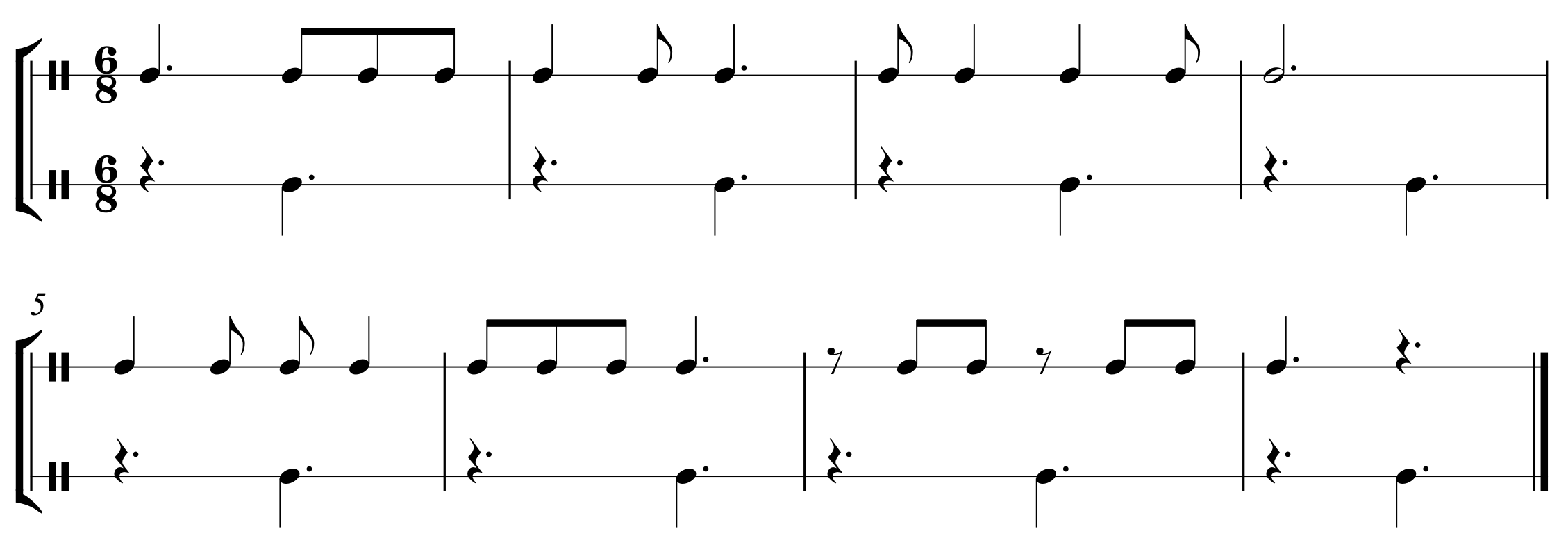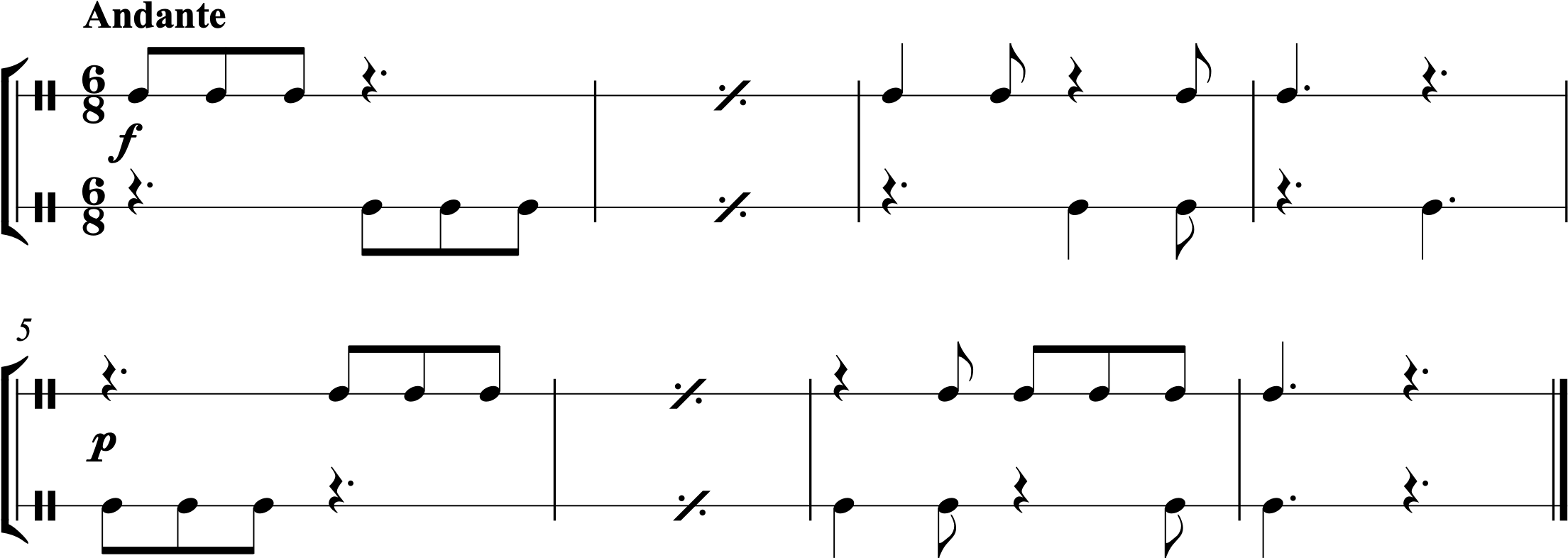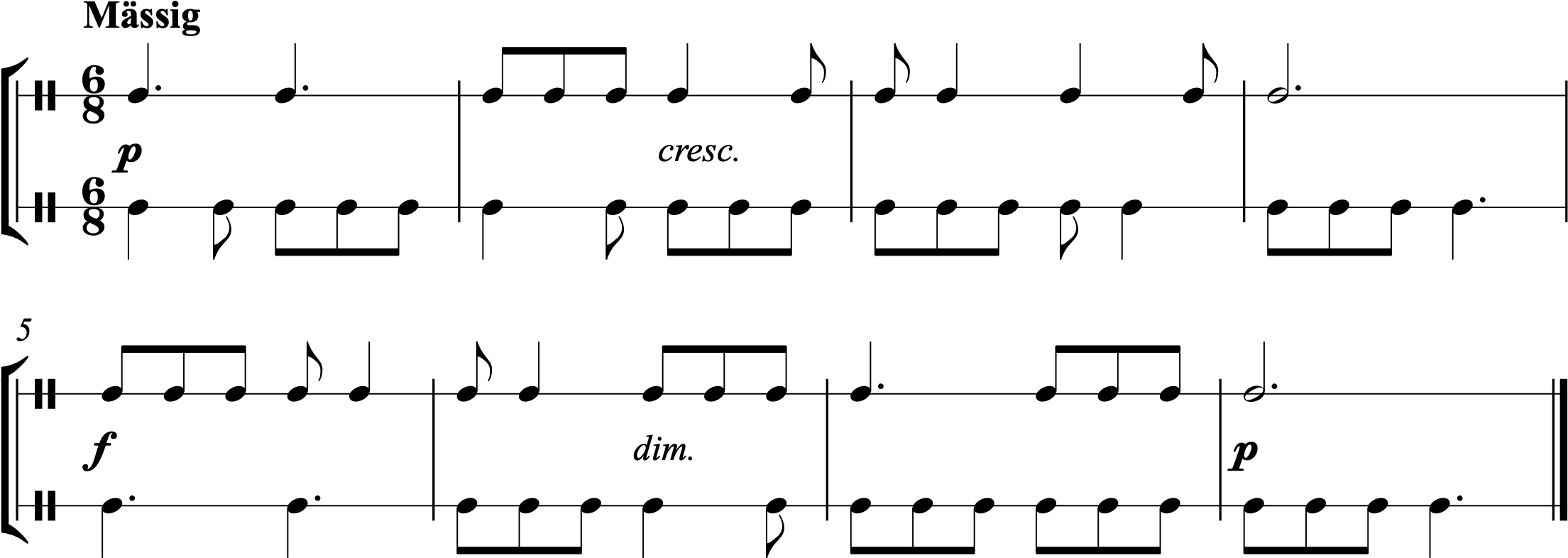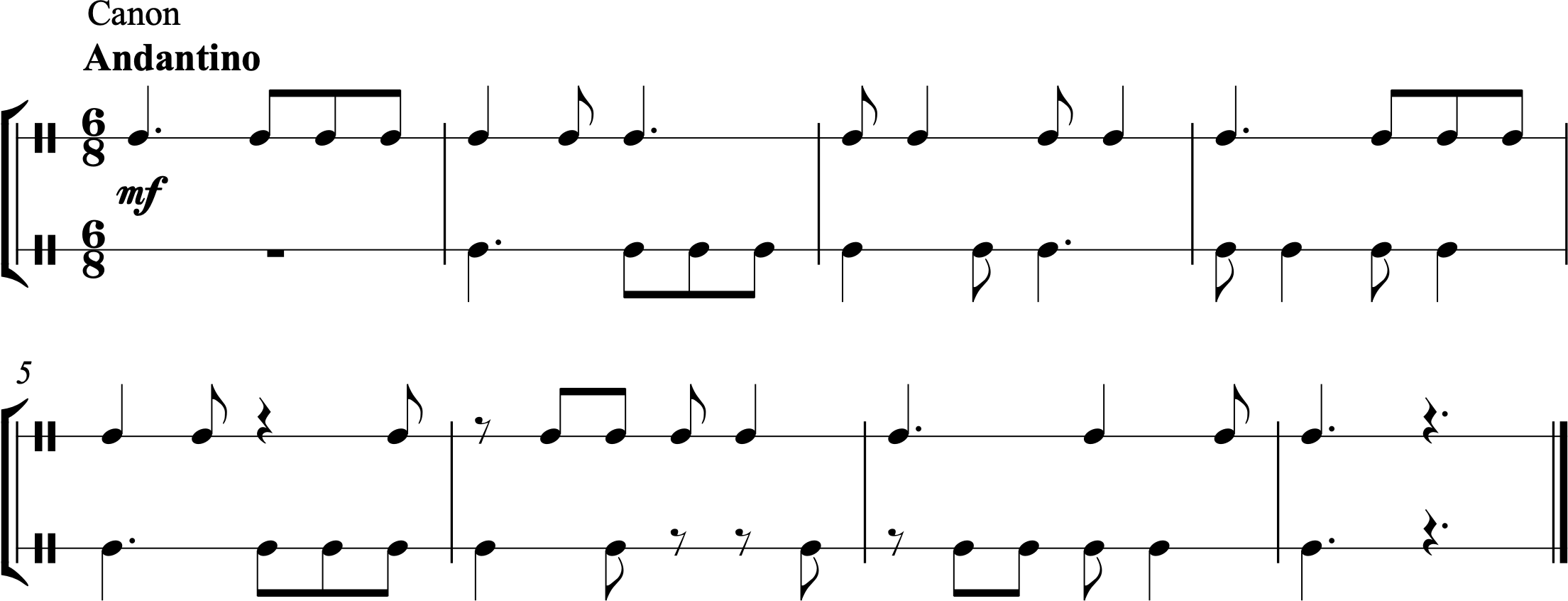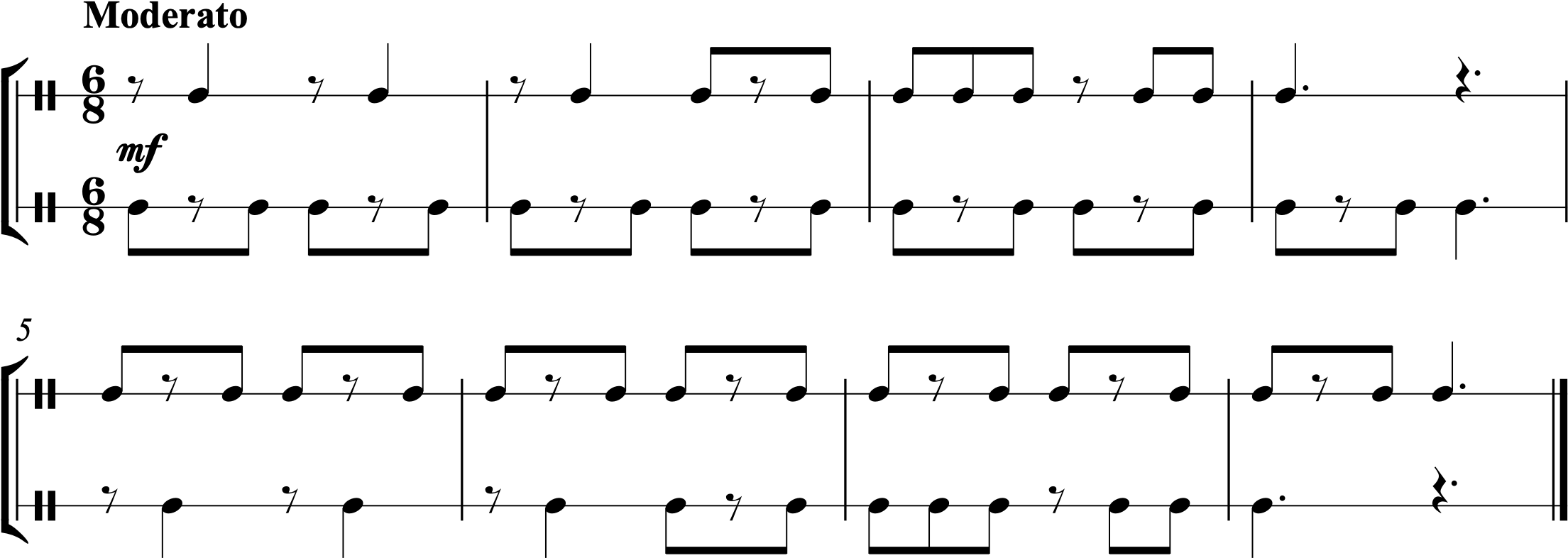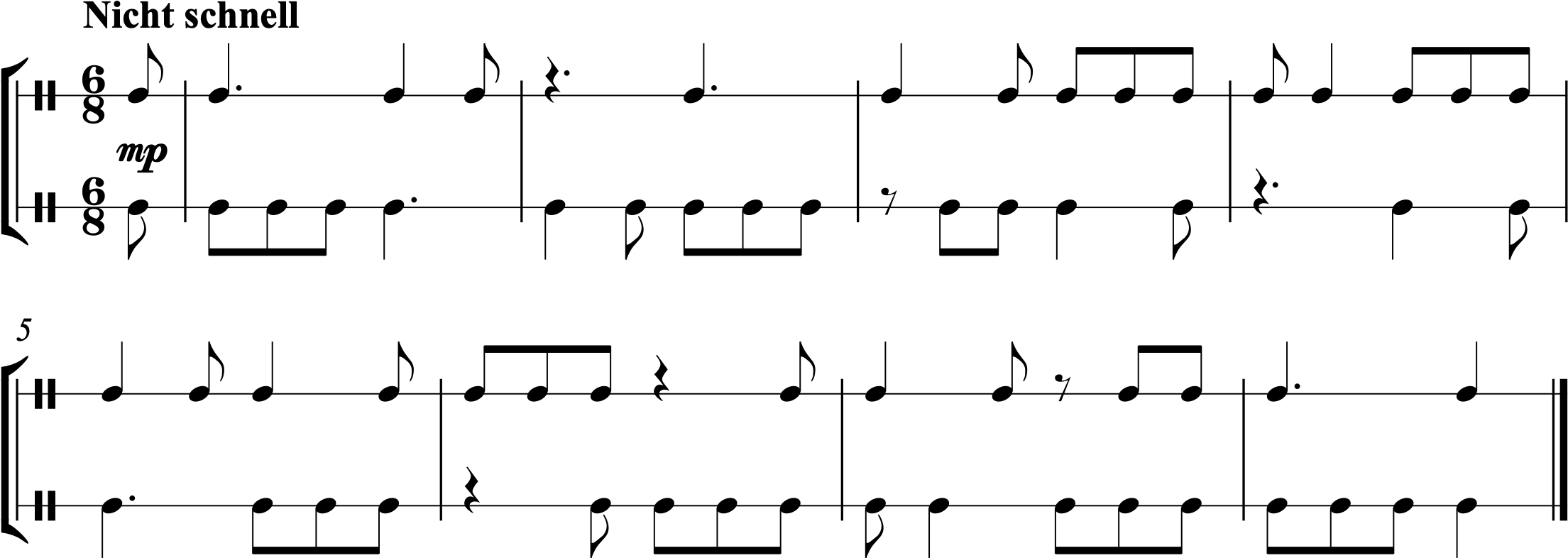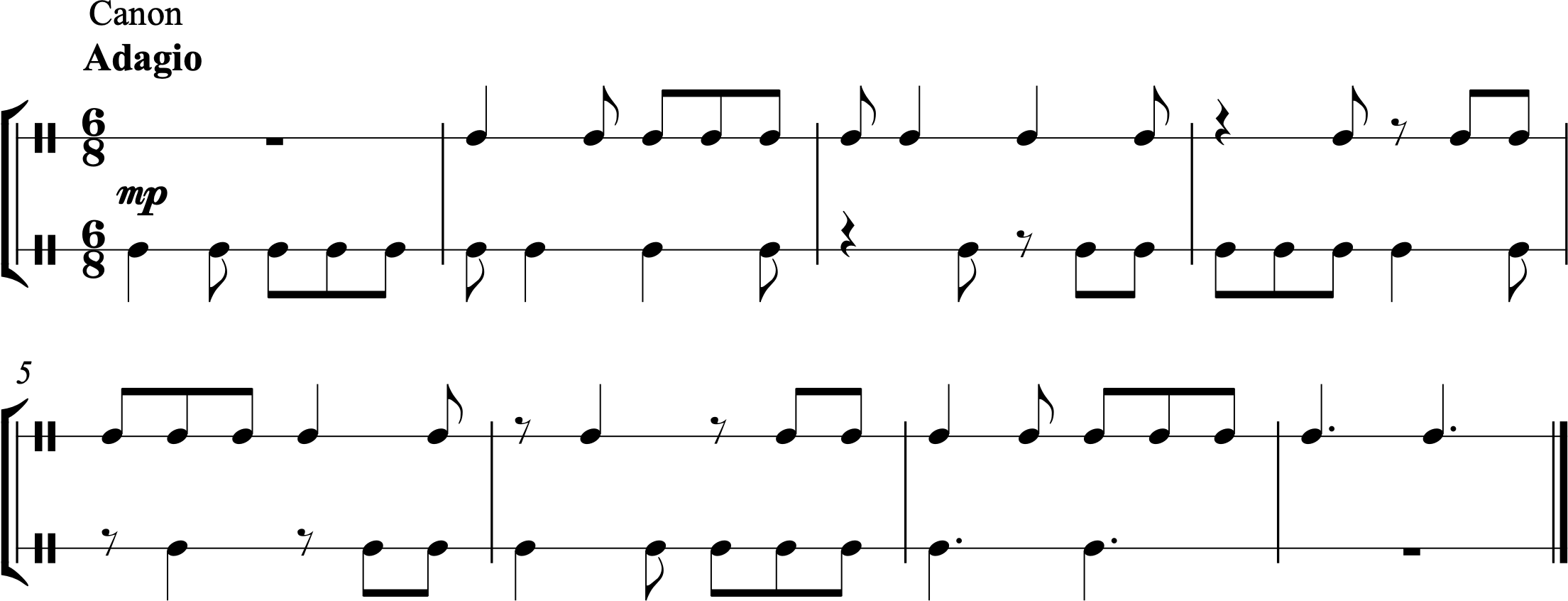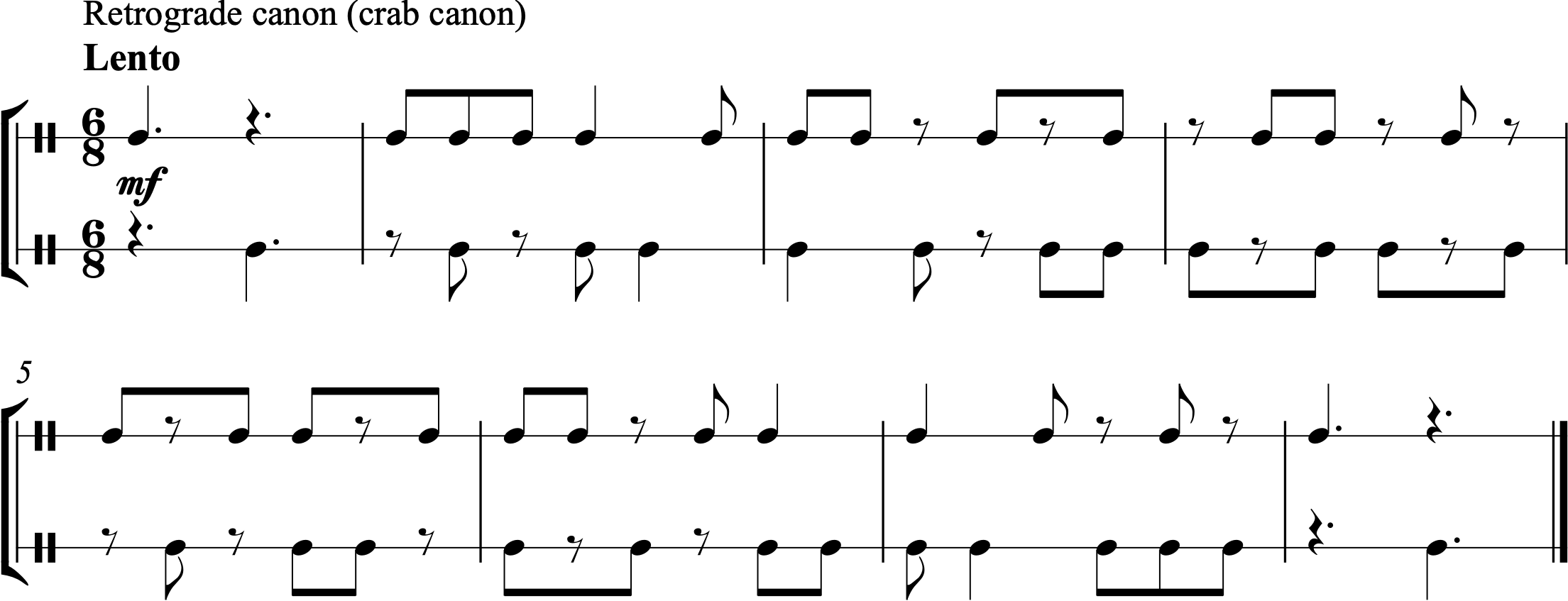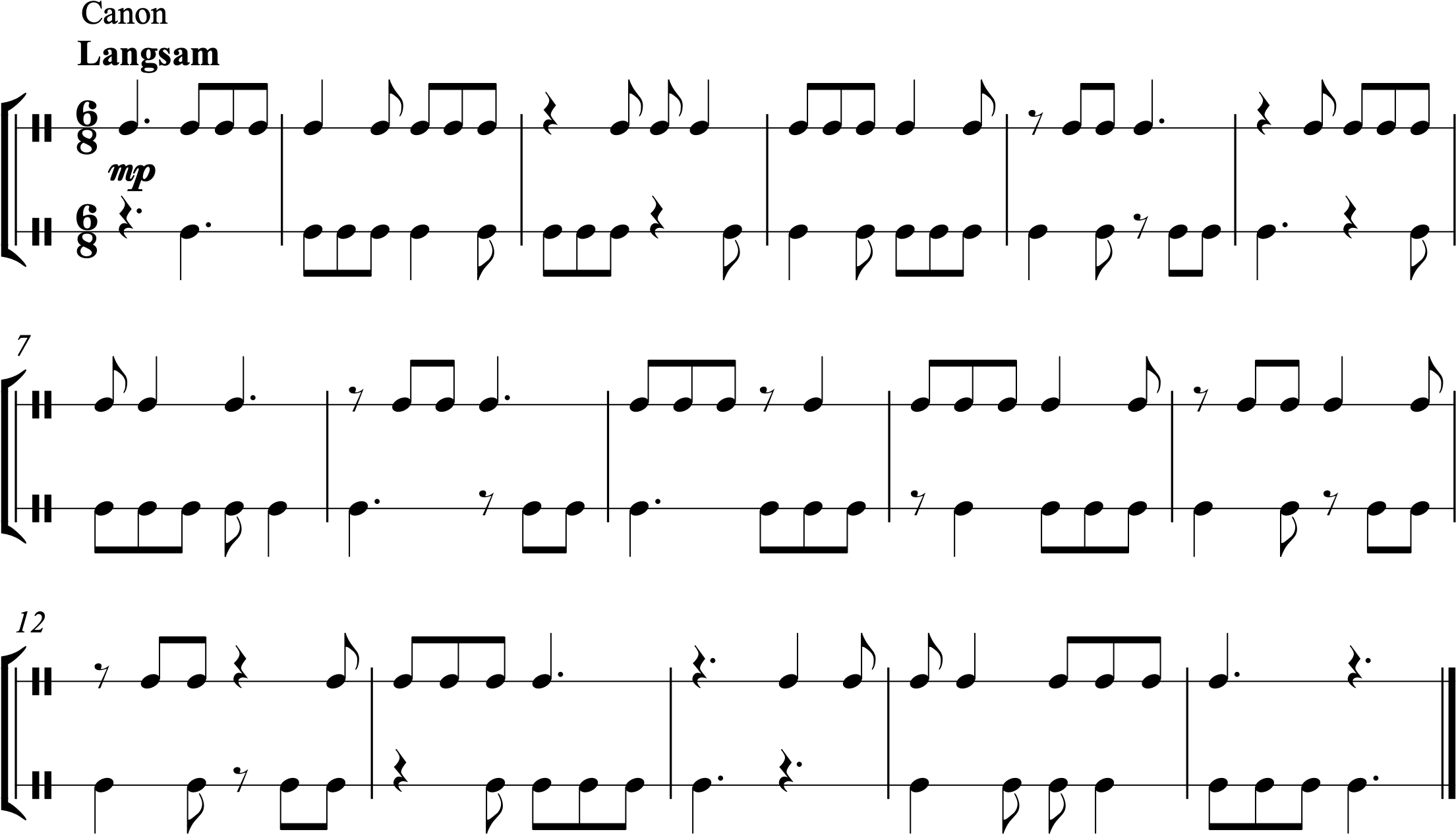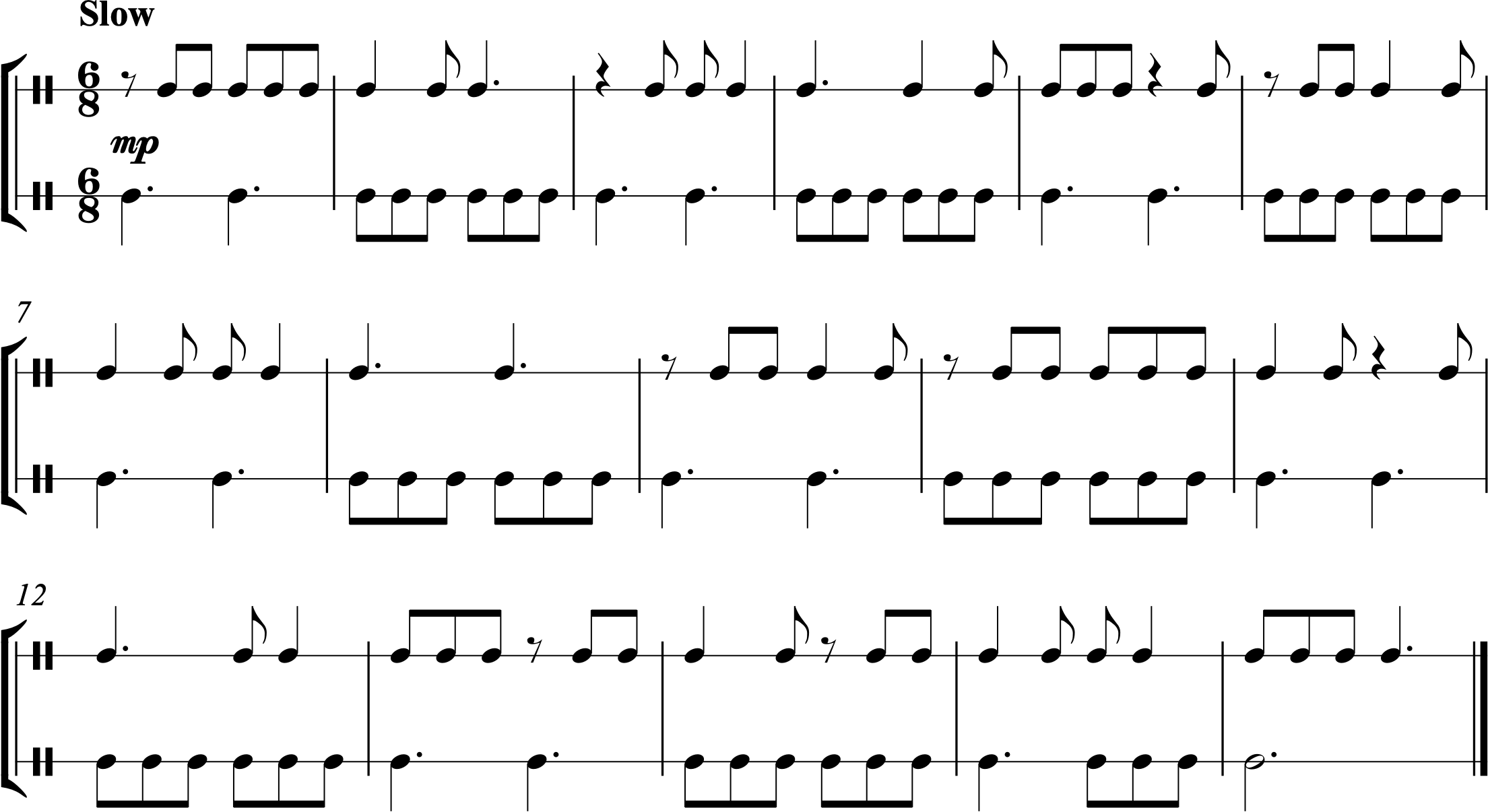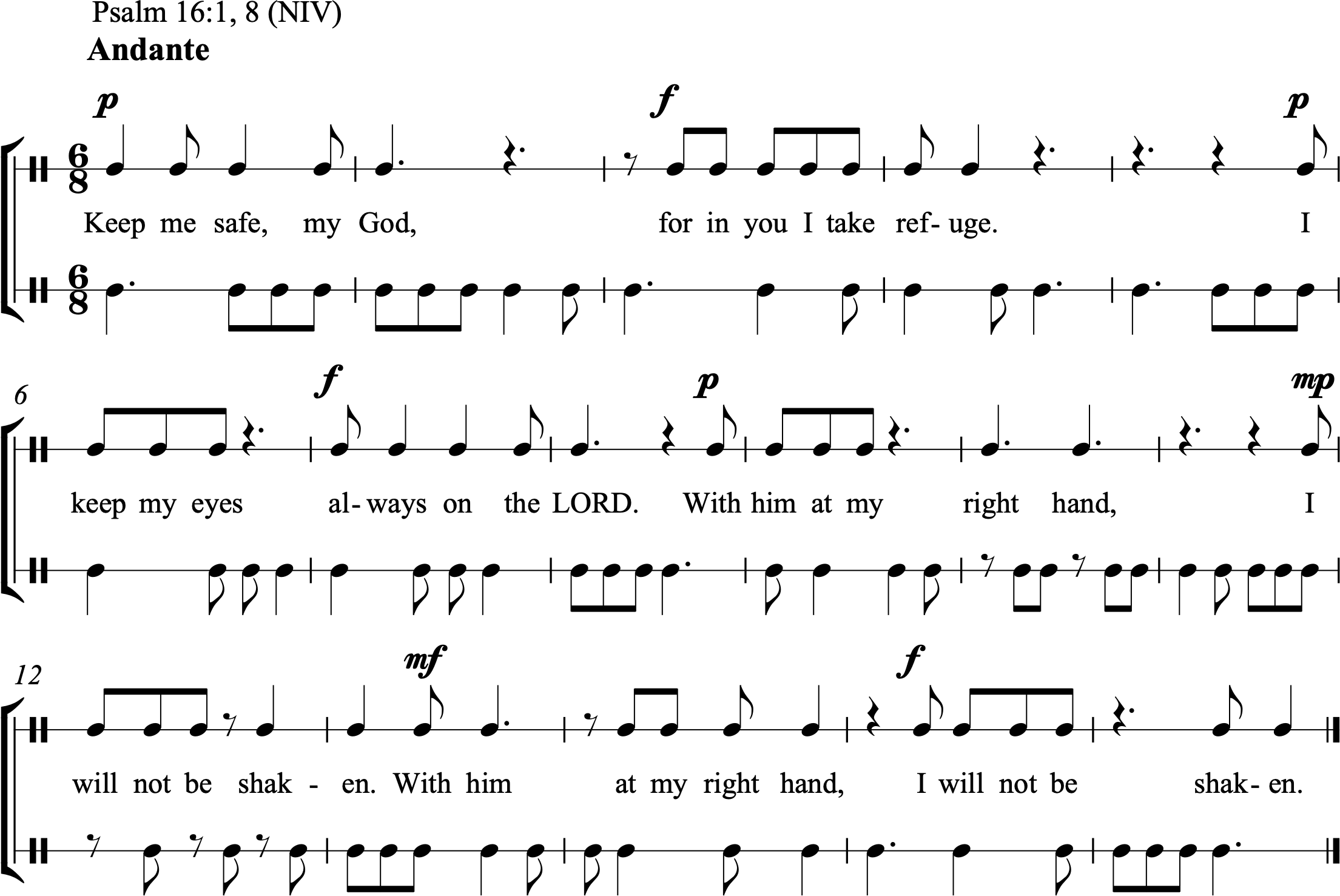Chapter 2: Introduction to Compound Meter
About This Chapter
About This Chapter: In this chapter, we will encounter compound meters for the first time. A compound meter is a meter in which the beat typically divides into three equal parts (in contrast to the simple meters we saw in Chapter 1, in which the beat typically divides into two equal parts). In this chapter, we’ll focus on 6/8—a compound duple meter. In later chapters, we’ll see other types of compound meters, like 9/8 (compound triple) and 12/8 (compound quadruple).
Rhythmic Syllables: As we discovered in Chapter 1, in simple meter, we use “1 & 2 &” to speak a 2/4 measure of eighth notes. Compound meters require some new syllables. We’ll still speak numbers on the beats (“1 2”), but for the divisions of the beat, we’ll speak “la” and “li” (pronounced “lee”). So a measure of 6/8 with all eighth note attacks—as seen in the example below—would be performed “1 la li 2 la li.”
Section A—Introduction to dotted half notes, dotted quarter notes, quarter notes, and eighth notes
Practice
Practice A:
 Practice by performing along with this audio file, which features a metronome click and the notated rhythm. You will hear two measures of wood block to establish the tempo before the exercise begins.
Practice by performing along with this audio file, which features a metronome click and the notated rhythm. You will hear two measures of wood block to establish the tempo before the exercise begins.
Next, try performing along with this audio file, which features the notated rhythm but no metronome click. You will hear two measures of wood block to establish the tempo before the exercise begins.
1.
2.
3.
4.
5.
6.
7.
8.
9.
10.
11.
12.
Section B—Introduction to rests
Practice
Practice B:
 Practice by performing along with this audio file, which features a metronome click and the notated rhythm. You will hear two measures of wood block to establish the tempo before the exercise begins.
Practice by performing along with this audio file, which features a metronome click and the notated rhythm. You will hear two measures of wood block to establish the tempo before the exercise begins.
Next, try performing along with this audio file, which features the notated rhythm but no metronome click. You will hear two measures of wood block to establish the tempo before the exercise begins.
13.
14.
15.
16.
17.
18.
19.
20.
21.
22.
23.
24.
25.
26.
Section C—Two-part rhythms featuring dotted half notes, dotted quarter notes, quarter notes, eighth notes, and rests
Practice
For these practice exercises, take the same three left-hand patterns from Demonstrations C1–C3 (“1 2,” “1 rest,” and “rest 2”) and put them with each of the notated single-line rhythms below.
Practice C1:
Practice by performing along with this audio file. You will hear two measures of wood block to establish the tempo before the exercise begins.
Lower part attacks on beats 1 & 2:
Lower part attacks on beat 1:
Lower part attacks on beat 2:
Practice C2:
Practice by performing along with this audio file. You will hear two measures of wood block to establish the tempo before the exercise begins.
Practice C3:
Practice by performing along with this audio file. You will hear two measures of wood block to establish the tempo before the exercise begins.
27.
28.
29.
30.
31.
32.
33.
34.
35.
36.













